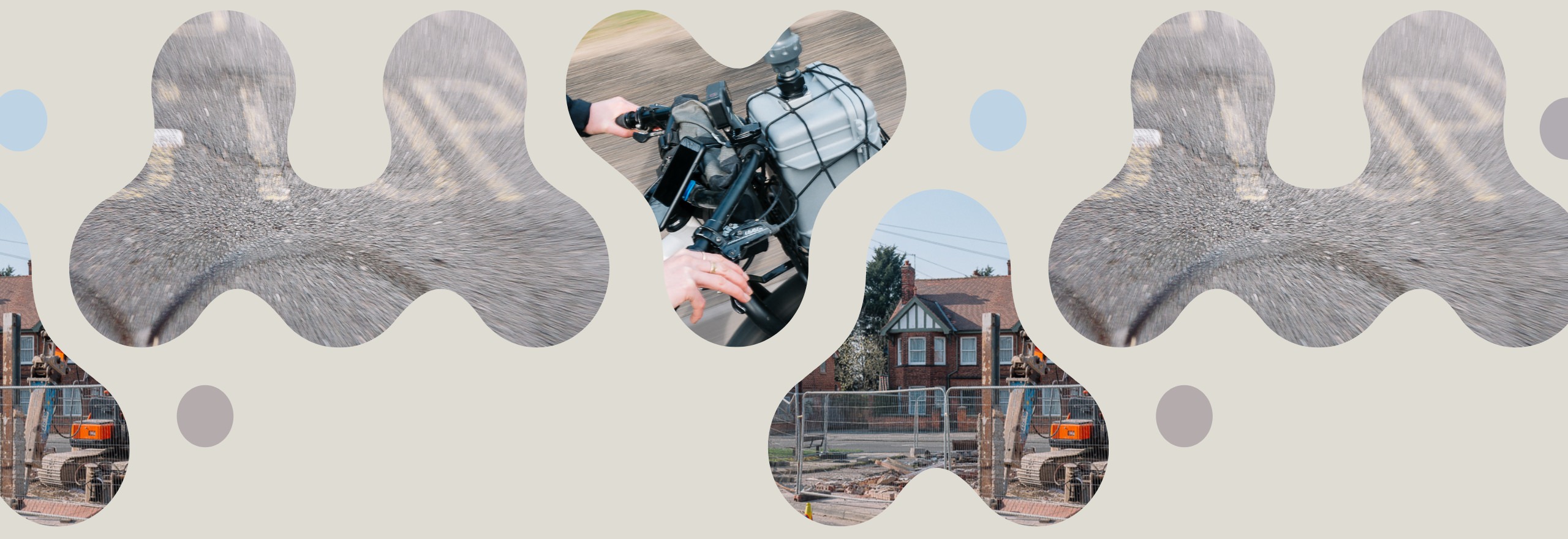What we do
Air pollution is now the biggest environmental threat to human health in the UK (Igini, 2022).
York Air Map makes air quality information accessible and empowering for cyclists and the wider community. This innovative map-based project has evolved from a collaboration between conceptual artist Clare Nattress and atmospheric scientist Dr Daniel Bryant in 2022 after Clare spent three months collecting air pollution data on her bicycle, with Dan analysing the results. Collectively they wish to provide an accessible platform that highlights ambient air pollution from ground level and reveals recurring pollution hotspots.

 Artist
Artist
Clare Nattress (she/they) is an interdisciplinary artist, researcher and educator working in the UK. She is a lecturer in the School of the Arts at York St John University and is currently undertaking a practice-led PhD at Leeds Beckett University. Her work embraces interconnectedness across ecosystems, attuning to the environment and new ways of perceiving the world around us. Her works encompass data art, performance, photography, digital practices and installation underpinned with conceptual rigour. Working within the intersection of art and science, the artist considers collaborations with scientists and other researchers to be a key element in her work.
In 2018 Clare sold all of her possessions and cycled in parts of the globe for a year, mainly living in a tent and carrying everything she needed on her bike. Having lived a minimalist lifestyle over the past few years, this year-long project raised further significant questions regarding the environment and air pollution. Cycling and air pollution have now become a basis for her art-making and practice-led research.
 Scientist
Scientist
Dr Daniel Bryant (he/him) is a researcher at the University of York’s Wolfson Atmospheric Chemistry Laboratories. His research focuses on understanding the composition of air pollution, using a range of analytical techniques.For his PhD, he investigated the composition of particulate matter in Beijing, Guangzhou and Delhi and focused on improving our ability to quantify species from a range of sources. Now as a Postdoc, he works as part of a large project which aims to investigate the toxicity of different air pollution sources.
Dan firmly believes that to tackle widespread environmental issues, interdisciplinary collaborations between scientists and artists allows for improved public dissemination of research. Through collaborations such as this, wider engagement with the public can be achieved, and enables engagement within communities which otherwise would be hard to reach.
This project utilised the commercially available Plume Flow 2 sensor to capture pollutant concentrations while the participants were cycling around York. Air quality sensors are relatively cheap devices and as such allow for many to be purchased forming a fleet of sensors. However, while sensors allow for great spatial coverage across cities for example, their accuracy is often an issue when it comes to reporting air quality data.
Crnosija et al., 2022 found that the overall accuracy of the average of 32 Flow 2 device’s for PM10 measurements was -380.59 % and that of the PM2.5 measurements was – 433.72 % although, had moderate correlation values of 0.52 and 0.76 respectively. NO 2 concentrations were evaluated by the Air Quality Sensor Performance Evaluation Center and found high correlations between the sensor and reference instrument for PM, but very limited correlations were observed for NO2 . Overall, sensors for their relative low cost provide an insight into air pollution events, but at limited accuracy. The Flow 2 sensor gave measurements of PM1, PM2.5 , PM10 , NO2 and VOC concentrations as well as putting these concentrations into context via an air quality index (AQI). This AQI runs from low (0-20) highlight perfect air quality, to 250 + which is extreme air pollution affecting everyone.
Crnosija, N, et al. 2022. Laboratory chamber evaluation of flow air quality sensor PM2.5 and PM10 measurements. International Journal of Environmental Research and Public Health 2022, 19(12): 7340. DOI: http://doi.org/10.3390/ijerph19127340
 Become a Citizen Scientist
Become a Citizen Scientist
If you would like to become a citizen scientist for York Air Map please do get in touch. With your help, it will allow us to analyse an expansive pool of data, highlight patterns and changes over time, and reveal pollution hotspots. The sensors we use require a smartphone which connects to an App and then attaches to your bicycle. Usually, our citizen scientists record their commutes over a month-long period. If you are interested, please do get in contact via the get in touch tab above.
Get in touch
If you are interested in York Air Map, and would like to get in touch, please email yorkairmap@gmail.com We look forward to hearing from you.
© Copyright York Air Map. All rights reserved 2023.